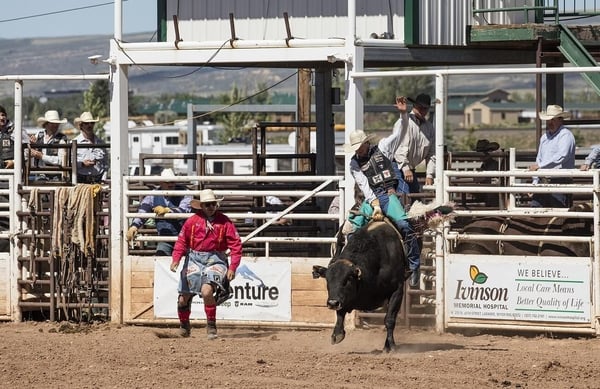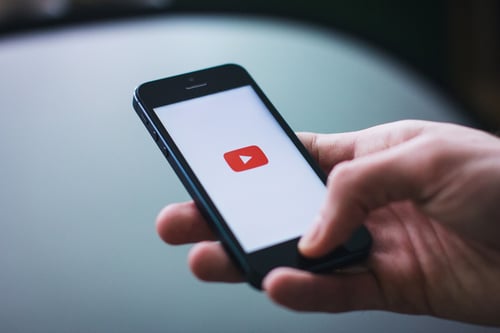To fully capitalize on your content marketing strategy, you must use the power of storytelling. As the third step in their framework of seven building blocks, Content Marketing Institute necessitates incorporating storytelling as part of a successful content marketing approach.
Continuing our series on how to apply storytelling to your content marketing campaigns, this post will focus on the use of visuals in storytelling.

Studies have shown that compelling visual content helps generate up to 94% more blog post views. These items can be images, infographics, graphs and videos. Furthermore, tweets with images receive 150% more retweets, and infographics are liked and shared up to 3x more than any other content on social media. These engaging elements also help make targeted online visitors stay on your site longer.
According to a study in 2016, 42% of B2C marketers said visual marketing is the most important type of content compared to 33% who chose blogging alone. Why, you might ask. Well, 90% of the information transmitted to the brain is visual, which means the brain can process visual information 60,000 times faster than it takes to understand text.
What Do Bull Riding and Visual Storytelling in Marketing Have in Common?

How many times have you mindlessly flipped through your Facebook, Instagram or Twitter feed, scanning and skipping most of the content? Too many times to admit? And, how many times did you stop when a video or image caught your eye?
According to Statistic Brain, the average attention span in 2000 was 12 seconds, and now it's only 8 seconds! Meaning that as a content marketer, you have, on average, 8 seconds to engage your target audience. To a bull rider, 8 seconds against a strong and bucking bull is the goal – for a content marketer, it's definitely a challenge.
The "wow" factor becomes even more important in that short time – it makes the user stop and wonder about the message of the post. By being bold and original, you'll stand out from the cat videos, memes and gifs that fill social media, so your 8 seconds will translate into clicks.
As I mentioned above, HubSpot has found that visual content generates up to 94% more views if compelling visual elements, such as videos, graphics, or photos, are added to your page. Adding visual elements to your storytelling will help your targeted audience better understand or appreciate your message.
Videos are the King of Visual Storytelling

In 2016, Cisco projected that videos would account for 80% of all internet traffic in 2019. Look at your Facebook, Twitter or Instagram feed – how much of it contains videos that make you stop and watch?
Adding a video to your blog post or website provides you with a unique opportunity to achieve your marketing goals through storytelling. Whether you're choosing to make a kinetic text video, produce an animated infographic or have on-camera talent talk about a specific topic, you have the power to convey your message in an engaging way that will leave the viewer wanting more. It makes your story authentic, relevant and personable.
If you're hesitant about video production because of the cost, don't be. Just like with stock photos and graphics, there are plenty of resources available for stock videos and archival footage to make your storytelling one-of-a-kind. Producing a well-told story for video doesn't have to be expensive – blockbuster CG, pyrotechnics and Hollywood stars aren't necessary, but your personality is. Your audience is concerned about what you do and why you do it.
How Pictures Improve Your Content Marketing Storytelling

Keith Walters is a photographer I follow on Instagram. His photos provide me with a feeling of serenity, even when I'm having a stressful day. The one above is of a gorgeous sunrise over Letchworth State Park in Western New York, and in it you can see the fog resting in the Grand Canyon of the East. Keith has captioned it with minimal words and hashtags, allowing the beauty and colors to do the talking.
Incorporating powerful images into your content marketing campaigns will appeal to your audience's emotions.
"A good image not only pleases the eye, but it stimulates all the senses...they can create warmth, evoke nostalgia, or instill modernity." – Content Marketing Institute
Visual Storytelling in Action – How Strava Stories Combine Photos and Graphics to Connect with Their Audience

As a cyclist, I'm a member of the website Strava. Strava is an online community of athletes, where you can track and share your fitness progress and goals. You can connect with friends, rivals and even professional athletes to see how your performances stack up. Strava also sells a subscription to a premium version of their mobile app for cyclists, which means they aren’t just a community – they’re a business with a product they’re trying to sell to their community.
In order to authentically connect with their community, Strava uses a collection of essays written by users and interviews with Strava athletes called Strava Stories that allows their audience to share their stories of running, bicycling, mountain climbing and more. Endurance athletes love to push their bodies to the limit, but they also love to recant the tales of their triumphs, struggles and "this-close" moments. When reading these stories, the audience has a chance to understand what an athlete has to do to perform at the highest level and what goes through his or her head on the day of competition.
There’s one Strava Story that really resonates with me (a member of Strava’s target audience) because I like to ride my bike home from Virtucom Group during the warmer months. Commutes Count chronicles four Strava users who commute to and home from work in New York City each day. Interspersed with small paragraphs of text are stunning photographs of the riders cruising the streets of The Big Apple and riding through Central Park. These visuals fill the screen to place you alongside the riders to experience the majesty of the city as well as the thrill of riding in one of the busiest cities in the world.
While I've never had the pleasure of riding my bike through the boroughs of New York or Central Park, this story appeals to me, as I relate to the athletes' experiences.
By incorporating beautiful photographs, readers get an idea of what it's like to be a Strava user, and can then sign up to join the athletic community. Ultimately, a portion of the community’s users will also go on to become premium mobile app buyers – and that’s what a content marketing campaign is all about.
Capture Hearts with Visual Storytelling to Improve Audience Engagement
What we love about traditional storytelling is how it affects us on an emotional level. The same rings true for content marketing. Telling a story through photos, graphics and videos to reach your audience and connect with them in powerful ways is a sure-fire method to boosting your content engagement at any stage of the buyer's journey. Want to see how our content team can enhance your message through visual storytelling? Schedule a free 30-minute consultation today.
Other posts in this series:
Digital Marketer’s Guide to Unforgettable Content Marketing Campaigns
Use the Right Characters to Jump-Start Your Content Development
Address Your Customers’ Pain Points By Writing Content With Conflict
Great Content Ends With Great Solutions And A Call-To-Action






